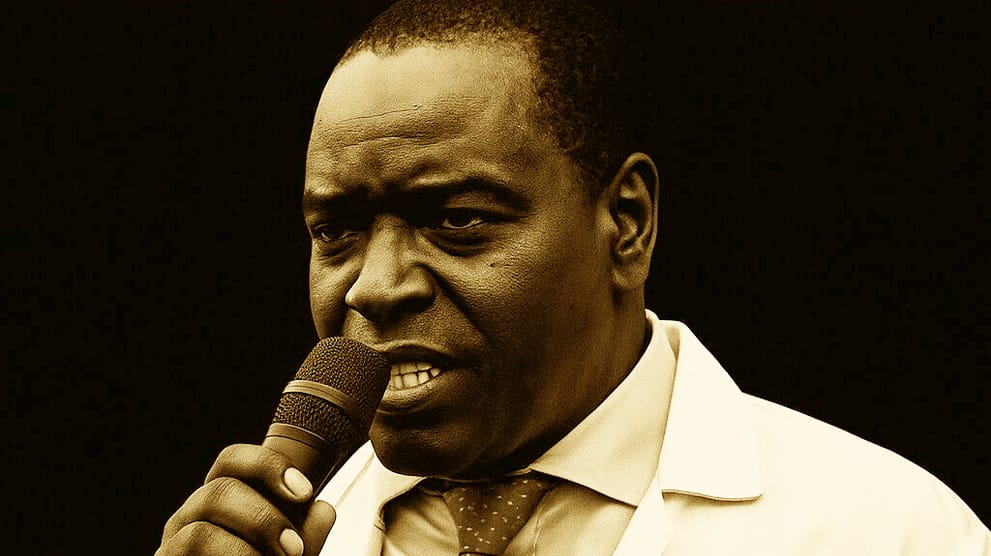The recent removal of Dr Evanson Kamuri from his position as Chief Executive Officer of the Kenyatta National Hospital (KNH) has raised more questions than answers. On the surface, the Ministry of Health paints it as a normal leadership transition, but beneath the official narrative lies a storm of intrigue, politics, and questionable procurement practices. The timing, the manner, and the motivations behind his sacking point to something far deeper than retirement or routine succession planning.
At the heart of the controversy is a Shs 400 million oxygen plant procured under suspicious circumstances—without KNH’s involvement, and seemingly pushed through by powerful forces within the Ministry of Health. Dr Kamuri, who had only weeks left before taking his terminal leave in October, suddenly found himself bundled out of his office in what insiders describe as a “rush to clear the way” for cartels determined to force irregular equipment into KNH.
This exposé unpacks the layers of the scandal—how health cartels allegedly manoeuvred to force Dr Kamuri out, the questionable procurement strategies at play, and why this is not just about one man’s exit but about the future of Kenya’s largest referral hospital and the integrity of the entire health system.


Who is Dr Evanson Kamuri?
Dr Evanson Kamuri is not a newcomer in Kenya’s health sector. Over the years, he built a reputation as a seasoned medical professional and administrator. His career trajectory positioned him at the helm of KNH, the largest public referral hospital in East and Central Africa—a post that comes with both prestige and enormous responsibility.
For years, Kamuri was credited with steadying the ship at KNH amid funding challenges, strained resources, and political interference. While the hospital has always struggled with overwhelming patient loads and inadequate equipment, he was seen as a steady hand trying to push reforms while balancing the competing interests of government, hospital staff, and patients.
When Kamuri assumed office, expectations were high. He was tasked with addressing issues ranging from underfunding to corruption allegations that have long plagued KNH. His leadership coincided with a period of increased scrutiny on public health institutions in Kenya, particularly regarding how billions of shillings in health budgets were being utilised.
Despite systemic obstacles, Kamuri’s tenure was marked by visible attempts to streamline operations. Patients and staff recall his insistence on better accountability, improved service delivery, and strategic planning for the hospital’s future. While not all his reforms succeeded, many considered him an administrator genuinely committed to the institution’s welfare.


Why His Sudden Removal Raised Eyebrows
That is why his abrupt removal shocked many. Unlike most public officers who gradually wind down before retirement, Kamuri was unceremoniously shown the door barely weeks before his planned terminal leave in October. The official reasoning—that his time had come—was dismissed by insiders who pointed out that he was already preparing to step aside. The rush, they argue, was deliberate.
To those following Kenya’s health politics, the real issue was not about age or retirement. It was about resistance. Kamuri, according to close associates, had resisted attempts to impose irregular procurement deals on KNH, specifically the Shs 400 million oxygen plant project. That resistance, it seems, was enough to make him a target.
On paper, the Ministry of Health framed Kamuri’s exit as routine succession planning. With his retirement looming, officials claimed it was only natural to pave the way for a new leader to take charge of KNH. To the public, this sounded reasonable—after all, transitions are part of institutional continuity.
But here lies the contradiction: if retirement was the sole reason, why not let him proceed to his terminal leave as planned? Why the sudden urgency to kick him out weeks earlier? This is where the cracks in the official narrative begin to show.
Whispers within the health sector tell a different story. For years, the Ministry of Health has been accused of being deeply infiltrated by procurement cartels. These are networks of powerful individuals—some in government, some in the private sector—who manipulate tenders, inflate costs, and push through irregular deals under the guise of “urgent health needs”.
In this case, the Shs 400 million oxygen plant became the centrepiece of the scheme. It was procured directly by the ministry, without input from KNH management, raising red flags among those who understood how hospital procurement is supposed to work. Kamuri, by standing his ground and refusing to rubber-stamp the deal, reportedly became an obstacle.
The manner of his removal fits into a broader pattern: create an official justification, discredit the individual, and quietly push through the irregular deal. By rushing Kamuri out, the Ministry could conveniently silence internal resistance at KNH and install leadership more willing to “cooperate”.
The cover-up, therefore, is not just about explaining why Kamuri had to leave—it’s about disguising the fact that his removal clears the way for questionable equipment supplies under the controversial Fixed Fee Contract (FFC) model.
At the centre of the saga is a Shs 400 million oxygen plant. Oxygen supply is a critical resource in hospitals, especially after the COVID-19 pandemic revealed just how fragile Kenya’s medical infrastructure can be. On the surface, procuring an oxygen plant sounds like a noble initiative—but the devil lies in the details.
The procurement process for this equipment bypassed the normal channels. Instead of KNH leading the process, as would be expected for equipment meant for its facilities, the Ministry of Health took full control. This raised immediate questions about transparency, oversight, and accountability.
According to available details, KNH and Dr Kamuri were not involved in the procurement. The ministry single-handedly handled the deal, meaning KNH was expected to simply receive equipment it neither ordered nor verified. For a facility of KNH’s stature, this was highly irregular and potentially risky, as it undermined hospital autonomy and accountability.


The exclusion of KNH leadership, particularly Dr Kamuri, was no accident. Insiders argue that he would have raised too many questions about the pricing, the suppliers, and the FFC model being used. By keeping him in the dark, the ministry ensured there would be minimal resistance to the procurement plan.
But as long as Kamuri remained CEO, there was still the risk he could block or expose the scheme. His premature removal, therefore, appears designed to eliminate that obstacle, clearing the way for the equipment to be supplied without scrutiny.
By October, Dr Kamuri was scheduled to begin his terminal leave, marking the final stretch of his career at KNH. Normally, such a transition would be procedural, with his successor appointed in an orderly manner. There was no crisis of leadership—he was already preparing to hand over.
Yet, despite this, the ministry rushed to kick him out abruptly. Why? Because waiting until October would mean procurement timelines for the oxygen plant could face delays or increased scrutiny. The cartels behind the deal needed him gone quickly so they could push through the project unopposed.
Seen in this light, the rush makes perfect sense. The oxygen plant procurement, the use of FFC contracts, and the exclusion of KNH leadership all point to a larger scheme. By prematurely ending Kamuri’s tenure, the ministry eliminated the last line of resistance, paving the way for irregular equipment deals at Kenya’s biggest hospital.










